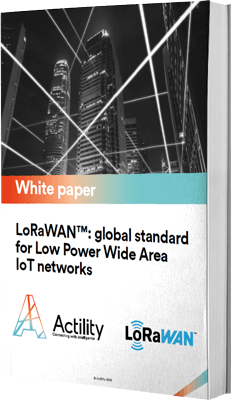It’s dark in the forests of Lapland at this time of year. The sun peers above the horizon for only a few hours in the late morning. The snow lies heavy on the ground and in the branches of the tall pines. Jarno peers through the trunks, seeking a glimpse of the well-camouflaged black and white reindeer that are his herd. He, like his forefathers for three centuries before him, is a reindeer herder, travelling up to 40km each day following and protecting his animals throughout the bleak Lapland winter and greener summer.
Unlike his forefathers, though, Jarno has technology on his side. Instead of relying on intuition and experience (though he has plenty of both), he is tracking his herd on his smartphone, thanks to a LoRaWAN communication network connecting GPS trackers around the necks of the animals. With its long-range coverage and extremely low power consumption offering long battery life, LoRaWAN is an ideal solution for tracking semi-wild herds that can roam free in herding districts covering one third of Finland. The reindeer are only gathered together by the herders twice a year, providing the sole opportunity for the trackers to be fitted or recharged.
Reindeer-herding is big business in Lapland, with up to 300,000 animals in the summer being managed by the herders, generating around €25m, per year from meat, fur and antler products. Unlike cattle or sheep, the reindeer spend most of their time in the wild, roaming where they choose according to the seasons and the food supply. Up to 10% of the reindeer are lost, both to the teeth, beaks and claws of hungry wolverine, lynx, bears golden eagles and wolves, and to the fast-moving metal of trucks and even freight trains – only last month over 100 reindeer were killed by a train in a single incident in Norway. Reindeer herders are on the lookout for better ways to protect their stock, and also to improve safety for drivers on Finnish roads.
The Finnish Reindeer Herders Association (Paliskuntain yhdistys) began their technology journey over ten years ago, using GPS and applications, and 3 years ago launched a smartphone app called “Porokello” (reindeer bell), which allowed professional drivers to report reindeers near roads and warn all drivers using this free application. The Association has now begun working with Finnish communications provider Digita to create a solution for tracking the reindeer remotely. Actility’s customer Digita began rolling out its LoRaWAN network in Finland just over a year ago, mounting gateways on the company’s existing television masts to achieve very long-range coverage. Beginning with Finland’s cities and industrial areas, the rollout now covers the remote forests of Lapland.
The pilot study began in June, and this September, at the bi-annual reindeer roundup, the herders were able to put few tens of trackers on selected animals. Because the reindeer move in herds, it’s not necessary to have a tracker on every beast. The herders discovered that putting trackers on “alpha female” reindeer was the best way of locating the herd as whole. The trackers use GPS satellite signals to determine their location, but communicate that location to Digita’s gateways over low power LoRaWAN. This maximizes the battery life, and reduces costs since there’s no need for cellular subscriptions for every device.
Inscrivez-vous à notre webinaire :
Nouvelle étape dans l’intégration des services urbains via LoRaWAN®
28 novembre 2024 – 10:00 (CET)







Learn more about the LoRaWAN technology by downloading the Actility “What is LoRaWAN” white paper